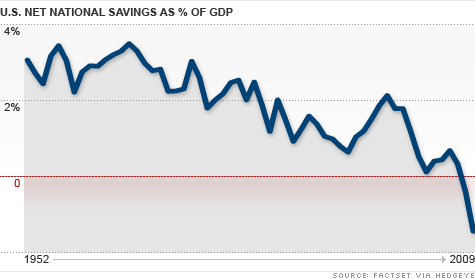The Law
The Market
Government
Religion
Agriculture
Human Rights
Written Language
The School
These seem to me to be masterpieces of intangible cultural heritage. They have been developed over thousands of years. These cultural ideas have diffused broadly through the human population of seven billion people. Building upon these memes, the lives of humans have been hugely improved; indeed without the development of institutions embodying these ideas the human population, if our species still existed at all, would be tiny fraction of its current size.
UNESCO has a list of the Masterpieces of Intangible Cultural Heritage. It includes:
The Vimbuza Healing Dance
The Cultural Space of the Bedu in Petra and Wadi Rum
The Mask Dance of the Drums from Drametse
Duduk Music
The Cultural Space of Palenque de San Basilio
You haven't heard of these? Who has?
In fairness, UNESCO changed the name to The Representative List of the Intangible Cultural Heritage of Humanity. The original purpose of the Convention under which this list has been generated was to draw attention of unusual and valued aspects of local cultures and to encourage their safeguarding. I fear that the process of selecting practices to be "honored" by inclusion in the list has been politicized, and that now the list is a vanity list for governments and a draw for tourism.
Intangible Cultural Heritage in the United States
Alexis de Tocqueville when he visited the United States in 1831 was struck by the extensive use of voluntary associations in this country. Filling the space between family and community on the small scale and government on the large, the voluntary associations of civil society carried out many of the functions of society. In this the United States was quite different than Europe.
In his book Bowling Alone: The Collapse and Revival of American Community Robert Putnam makes the case that Americans have largely lost the bowling clubs and other voluntary associations. However, people now often feel isolated and alienated; he cites frequent surveys that indicate Americans wish to live in a more civil, a more trustworthy, and a more collectively caring community. Essentially Americans seem to regret the deterioration of an important part of their intangible cultural heritage.
 |
| A modern town meeting in Amherst |
Unfortunately, so too is slavery, "slavery by another name", Jim Crow laws, and prejudice against Blacks. Among other unfortunate cultural heritages is a history of mistreatment of American Indians, including centuries of explicit effort by the European Americans to erase Indian cultural heritage. Chinese were excluded from immigrating and Japanese Americans were put into camps in World War II. There is a heritage of discrimination against immigrants -- Germans in colonial times, Irish, Italians, Catholics, and now Hispanics.
The United States has many current advantages. It has a heritage of rule of law, democratic participation in government. Many Americans go to good schools, and the system of higher education is good by world standards. On the other hand, America spends more on health care than any other nation, but has only middling health status indicators. Too many Americans are in jail, too many have futures limited by criminal records, the murder rate is far too high, organized crime is a problem, and there is excessive drug use.
Cultures change. There is a heritage in American culture of changes towards a more inclusive society. There is also a more recent heritage of change towards an economy in which there is less economic mobility. And all of this is interlocked in complex patterns of positive and negative reinforcement of cultural memes.
Think Abour Intangible Cultural Heritage in Haiti
The earthquake in 2010 in Haiti drew world attention to that country. It was formed by slaves successfully revolting against their masters and taking control of the governance of their country. The nation survived isolation from the community of nations -- it was only Lincoln in the time of the U.S. Civil War that brought the USA to diplomatic recognition of Haiti. It was invaded by the United States and under occupation from 1915 to 1934. Then came the Duvalier dictatorial kleptocracy. The people of Haiti live in great poverty, in a land that has been largely denuded of its forests, subject to earthquakes, tsunamis and hurricanes.
 |
| Source: http://www.post-gazette.com via Tande |
On the other hand, Haiti has a tradition of the Tonton Macoute -- organized thugs who terrorized the rest of the population. I recall on a visit to Haiti years ago having been told that land registration was a problem because Haitian farmers preferred to have land in separated small pieces; that way it was harder for others to steal their land from them. Papa Doc is supposed to have taken advantage of a reputation that he could use magical means to damage his opponents. There is much in Haitian culture that most Haitians would love to see gone. Indeed, they would love to learn from other cultures how those cultures have overcome similar problems.
A Modest Proposal for UNESCO
UNESCO's program in the social and human sciences, especially its Management of Social Transitions program, is the lead in the United Nations system working in the social sciences. Might it create an international consortium of social scientists studying the process of cultural transition, with an emphasis on understanding the memes to be preserved and shared and those to be eliminated and prevented from replication.
Might UNESCO in its program on intangible cultural heritage encourage dialog among cultures focused on "righteous" cultural change. Such a dialog might focus on the cultural memes that people would like to remove from their own cultures and the cultures of their neighbors, and the memes that they hope to retain.
One of my favorite books is Giving Up the Gun: Japan's Reversion to the Sword, 1543-1879 by Noel Perrin. It tells how the Japanese people, having mastered the technology of production and use of guns and having used guns successfully in battle, stored their guns away and reduced the level of guns in warfare and violence. Japan also made massive cultural changes after the country was defeated in World War II, changes that were designed to make the country less warlike.
On the other hand, the Japanese in the 20th century deliberately and successfully enhanced cultural traditions from Kabuki to Sumo wrestling. In part it did so to limit the cultural introductions from U.S. and European culture to only those that were congenial to the Japanese people, Japanese have used these experiences to lead in UNESCO's programs in intangible culture.
I am especially interested in what might be called "high level memes", cultural abilities to delete damaging memes from its own culture and to preserve and enhance others that it finds useful and desirable.
Might UNESCO also promote a dialog among cultures to encourage the sharing of these useful high level memes.
UNESCO's programs dealing with intangible cultural heritage, if moved into these directions, might become the most important in promoting the defenses of peace in the minds of men and in promoting development that reduces poverty and promotes human rights.









.svg/800px-Chart_of_US_Top_1%25_Income_Share_(1913-2008).svg.png)







.jpg)








